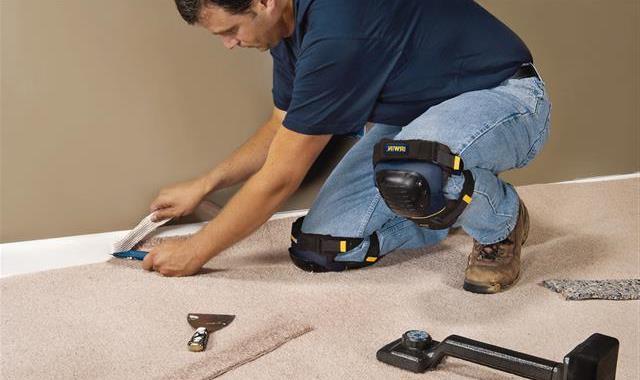Installation with Tackless Strips – Stretch In Carpet Installation
Most private and some business cover is introduced over a pad (or cushion), and is affixed to the floor by extending the rug onto pins jutting from wood strips around the border of the establishment zone. The wooden strip with anticipating tacks or sticks is known as a ‘tackless strip,’ so named on the grounds that it appears differently in relation to the now out of date establishment technique for attaching the rug straightforwardly to the floor.
Extend in rug establishment is the most famous establishment techniques in homes. In this establishment, pieces of wood (called tackless strip) are nailed (or once in a while stuck) to the floor around the edges of the room. These strips have several nails that are calculated in towards the divider. Cushioning is verified to the floor amidst the room. The rug is then joined to the pins around the room. The installer then stretches the rug tight over the room. Favorable circumstances of stretch in floor covering establishment:
- A quick, efficient installation method.
- Pad is more comfortable.
- Pad is more insulating.
- The pad extends the life of the carpet.
- Easier to remove than glued down carpet.
- The only installation method that allows the installer to effectively work with patterned carpets, especially when the pattern has minor problems such as bow or skew (which they always do).
Disadvantages are:
- Not suitable for very large spaces due to concerns of buckling or rippling.
- Not suitable for heavy rolling traffic, or extensive light duty rolling traffic.
Direct glue down carpet installation
Direct paste down establishment is the most well known floor covering establishment in business settings. In this sort of establishment, the rug is stuck straightforwardly to the floor. The floor should be exceptionally smooth. Any flaws in the floor will broadcast through the rug and be noticeable. Blemishes in the floor may likewise cause wear spots. Preferences of stuck down floor covering are:
- The carpet is solidly supported and has minimal movement. It provides a good solid base which is better for rolling traffic, including wheelchairs.
- Suitable for ramps.
- Low profile. Stores transitioning from carpet to linoleum will find this to be the lowest profile, safest transition.
- Minimize buckling in buildings that have climate control turned off for periods of time.
- Seams do not peak, and are more durable due to lack of flexing.
- Suitable for large areas.
Disadvantages of glued down carpet are:
- Lack of pad is less comfortable.
- Lack of pad means less insulation.
- Carpet is less durable without pad. Pad acts like a shock absorber and can greatly increase the life of a carpet.
- When replacement is necessary, removal is more difficult than stretch in installations.
Double glue down carpet installation
Often called double stick installation. This is similar to direct glue down installation, except that we first glue a pad to the floor and then glue the carpet to the pad. The pad for this type of installation can not be any carpet pad, but a densified pad made specifically for this type of installation. Advantages of double glue down installation over direct glue down are:
- More comfortable.
- More insulation.
- The pad will extend the life of the carpet.
Disadvantages are:
- Higher costs #1. Even more difficult removal than direct glue down when replacement is necessary.
- Higher costs #2. Double glue pad. Pad costs more than no pad. And the densified double stick pads cost more than ordinary pad.
- Higher costs #3. We are gluing down the pad, and then gluing down the carpet. It’s like doing the installation twice, which the installer is paid for.
 Carpet Guides All About Carpet Installing
Carpet Guides All About Carpet Installing 

